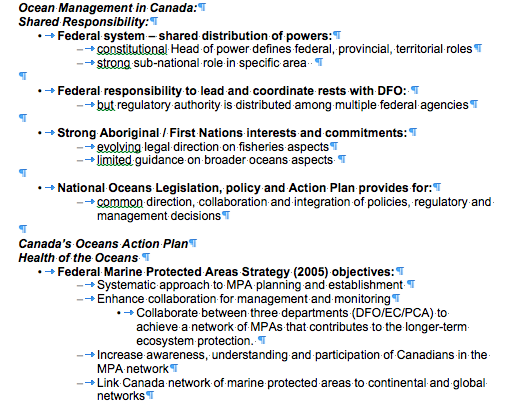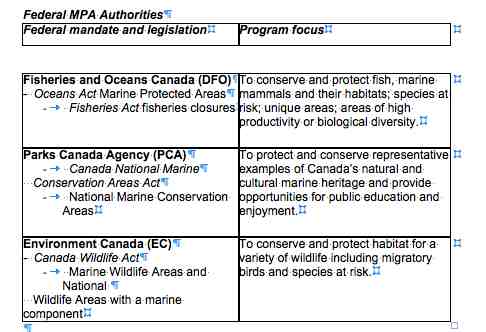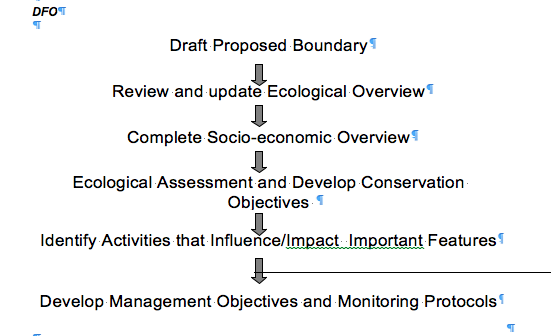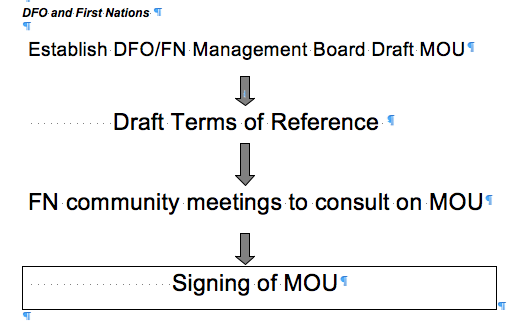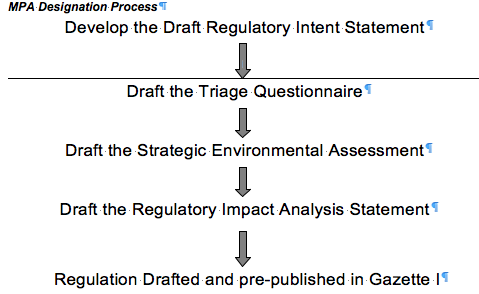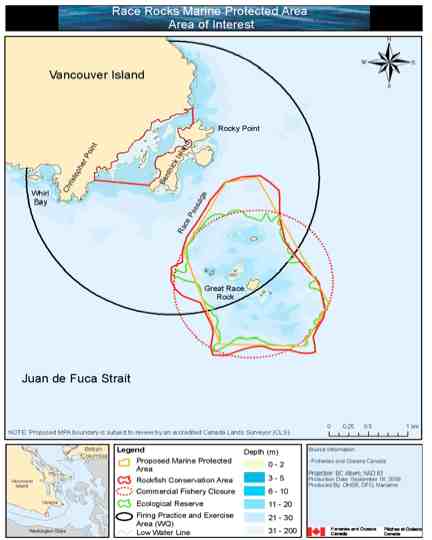Race Rocks Marine Protected Area , Race Rocks Advisory Board Meeting
September 25, 2009
(Ed note:) This “history and process background “was presented at the Introductory meeting of the Advisory Board in the second round of meetings since the last efforts were abandoned at the impasse after the gazetting of the DFO modified document in October, 2000).
History (as presented by DFO)
- •Canada’s Oceans Act came into force in 1997
- •In 1998, the Minister of Fisheries and Oceans announced four “pilot” MPA initiatives, including Race Rocks
- •Race Rocks meets the criteria outlined in Section 35(1) of the Oceans Act which authorizes the designation of Marine Protected Areas for the conservation and protection of:
- –endangered/threatened species and their habitats;
- –unique habitats;
- –areas of high biodiversity or biological productivity
More history….
- •Also an opportunity to demonstrate the collaborative approach envisioned for implementation of the 1998 Canada/BC MPA strategy by utilizing complementary legislative instruments to enhance protection of the Race Rocks Ecological Reserve.
- •The Race Rocks Advisory Board (RRAB) was established in December 1999 to assist DFO and BC Parks with consultations and the development of consensus-based recommendations for designation and management of the MPA.
- •Membership included representatives of federal and provincial government (DFO, DND, Parks Canada, BC MELP) Pearson College, non-govt science, ENGOs, recreational fishery, eco-tourism operators, local marina operators
- •The FN perspective on cultural significance of Race Rocks was provided by Tom Sampson, a member of the Coast Salish Sea Council (but not a member of one of the four FNs claiming Race Rocks as part of their traditional territory)
- •On March 22, 2000, the RRAB unanimously endorsed a series of recommendations for designation and cooperative management of Race Rocks as a joint federal/provincial MPA to be named X’waYeN (Race Rocks). The recommendations included a governance model and voluntary compliance/best practices guidelines approach to management of activities within the MPA
- •On September 14, 2000 the Minister of Fisheries and Oceans and the BC Minister of Environment, Lands and Parks announced their endorsement of the RRAB’s recommendation that RR become Canada’s first Oceans Act MPA.
- •The draft designation regulation for Race Rocks was pre-published in Part 1 of the Canada Gazette on October 28, 2000.
And that’s where things went sideways..
- •The chiefs of three of the Race Rocks FNs intervened during the 60 day public comment period, expressing their opposition to the MPA designation, citing inadequate consultation and concerns about possible infringement on their right to fish in the area.
- •Following a series of bilateral meetings with each FN, DFO was advised by letter of their agreement to move ahead with designation on the condition that management of the MPA would be managed jointly with FNs
- •DFO then initiated discussions with the FNs on the development of an agreement which would define the governance structure, authorities, roles and responsibilities for cooperative management, consensus framework and provision for advice to Ministers
- •These discussions evolved into negotiations of a broader agreement for cooperative management of the FN’s Area of Interest
- •(*N.B. see discussion in minutes regarding content of this slide*)
Since then…
- •Discussions on the MPA were put on hold pending negotiation of the agreement, a process which took approximately two years
- •Although an agreement was reached in late 2006, it was never signed off as one FN pulled out at the 11th hour
- •Meanwhile, the Canada Gazette regulatory package expired in 2002
- •DFO approached individual FNs in early 2008 to determine their interest in pursuing the MPA receiving a positive response
- •Development of a new agreement with the collective Race Rocks FNs is now underway
Provincial & Territorial Protected Areas
| Protection Focus | Examples |
| Marine biodiversity through representative ecosystems and special natural featuresTargeted species or populations and their supporting habitat
Habitats and ecosystems supporting rare or at risk species Preservation of areas with cultural heritage values for recreational, educational, cultural uses Ecological Reserves, representative natural ecosystems, Preservation of areas established under a First Nation Final agreement for social, ceremonial and cultural uses |
Provincial ParksMarine Parks
Conservancies Special Management Areas Natural areas Wildlife Management Areas
|
Current Status
Timelines
- •DFO science work to complete overview and conservation objectives (December 2009)
- •DFO work to develop management objectives (December 2009)
- •DFO and First Nations signing of Memorandum of Understanding ( December 2009)
- •Public Advisory Board consultations with stakeholders and the public ( January 2010)
- •Drafting of regulatory documents for regulatory process (January 2010)
- •Regulation ready for publishing ( summer 2010)
Values Discussion
Conservation Values
- •ECOLOGICAL IMPORTANCE
- •UNIQUENESS
- •BIOGEOGRAPHICAL IMPORTANCE
- •INTERNATIONAL OR NATIONAL IMPORTANCE
- •VULNERABILITY
- •PRODUCTIVITY
- •NATURALNESS
- •REPRESENTATIVENESS
- •COMPREHENSIVENESS
- •ECOLOGICAL IMPORTANCE
For a very small area ( less than 220 hectares), the area has one of the highest levels of biodiversity in Canada’s pacific waters (Draft Science Review – Wright & Smiley). Several ‘endangered’ or “listed species of concern” are found in the waters.
- •UNIQUENESS
The area represents a distinct turbulent and nutrient-rich regime with an exceptionally broad range of concentrated biodiversity
- •BIOGEOGRAPHICAL IMPORTANCE
The juncture of bathymetric profile, generous tidal action, previous levels of protection and wide bio-diversity make this area exceptionally rare and unique
- •INTERNATIONAL OR NATIONAL IMPORTANCE
Race Rocks has potential for consideration by the UNESCO World Heritage List as a site of outstanding universal significance based on its natural heritage values
- •VULNERABILITY
Relative to other coastal waters, the area is reasonably healthy but vulnerable because of its high concentration of biodiversity in a small area
- •PRODUCTIVITY
The combination of rocky reefs and strong currents create a very high level of biological productivity and spectrum of biodiversity
- •NATURALNESS
Designation as an ecological reserve for more than twenty years, with a high level of stewardship has provided a good level of protection from all major forms of human-induced alterations.
- •REPRESENTATIVENESS
Highly representative of a marine ecosystem in the southernmost waters of western Canada and contains rare and endangered species
- •COMPREHENSIVENESS
The proposed area ranges from the terrestrial to the depths of twenty fathoms in the subtidal waters, wherein is found the majority of the biodiversity, which has full protection from complementary authorities.
Socio-economic Values
Will be discussed using the input table.

